Potential Encounters
A conversation with Frances Adair Mckenzie
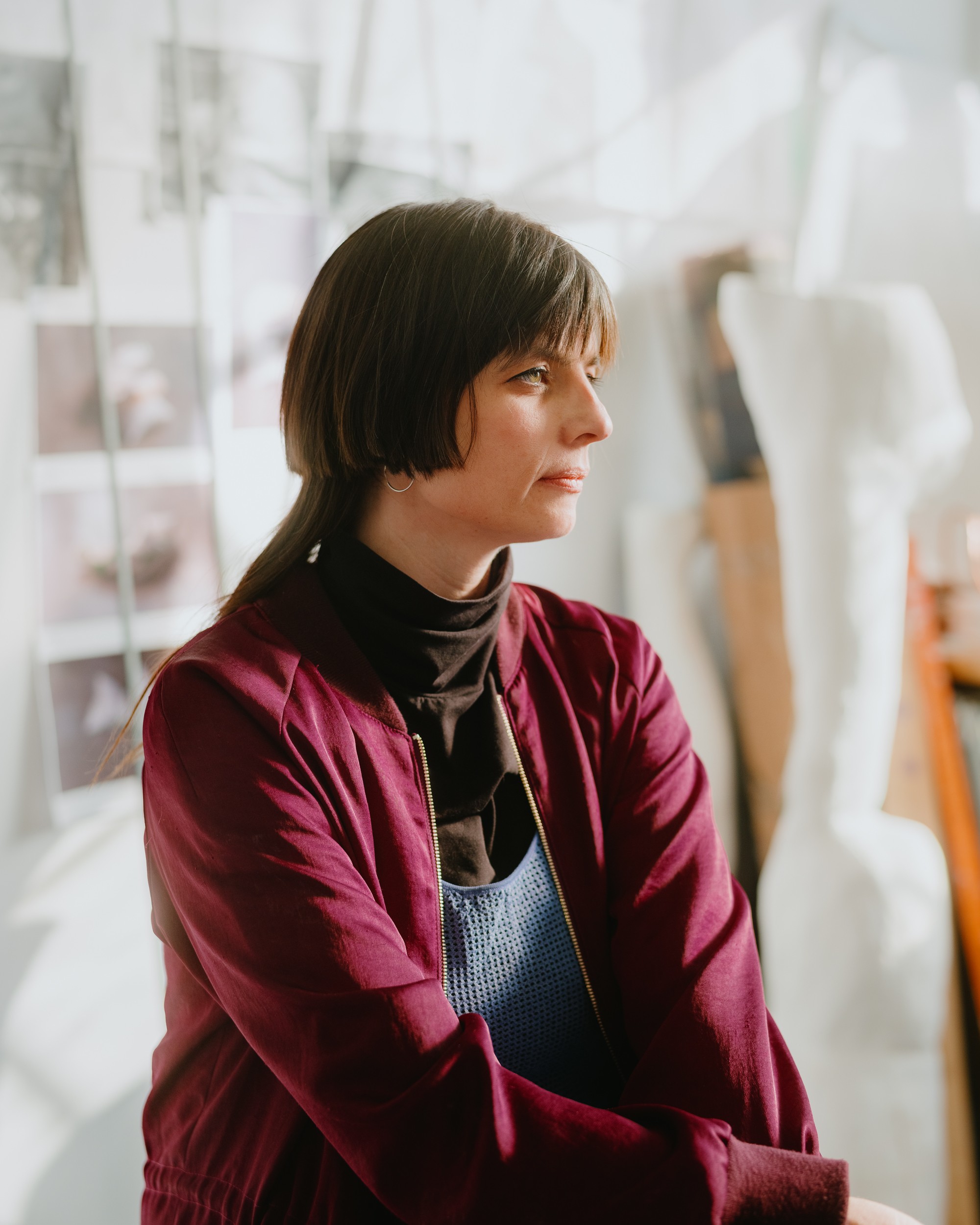
Frances Adair Mckenzie’s work exists within transitional spaces – continually shifting between stillness and movement, material and concept, as well as obfuscation and legibility. In her most recent exhibition, Migraine Season, the Montreal-based artist continues her exploration into themes of desire, and the ways in which evolving technology impacts how we interface with the world.
In advance of her exhibition, we spoke with the artist about architectural space and framing, seemingly contradictory impulses, as well as the influence of film on her work.
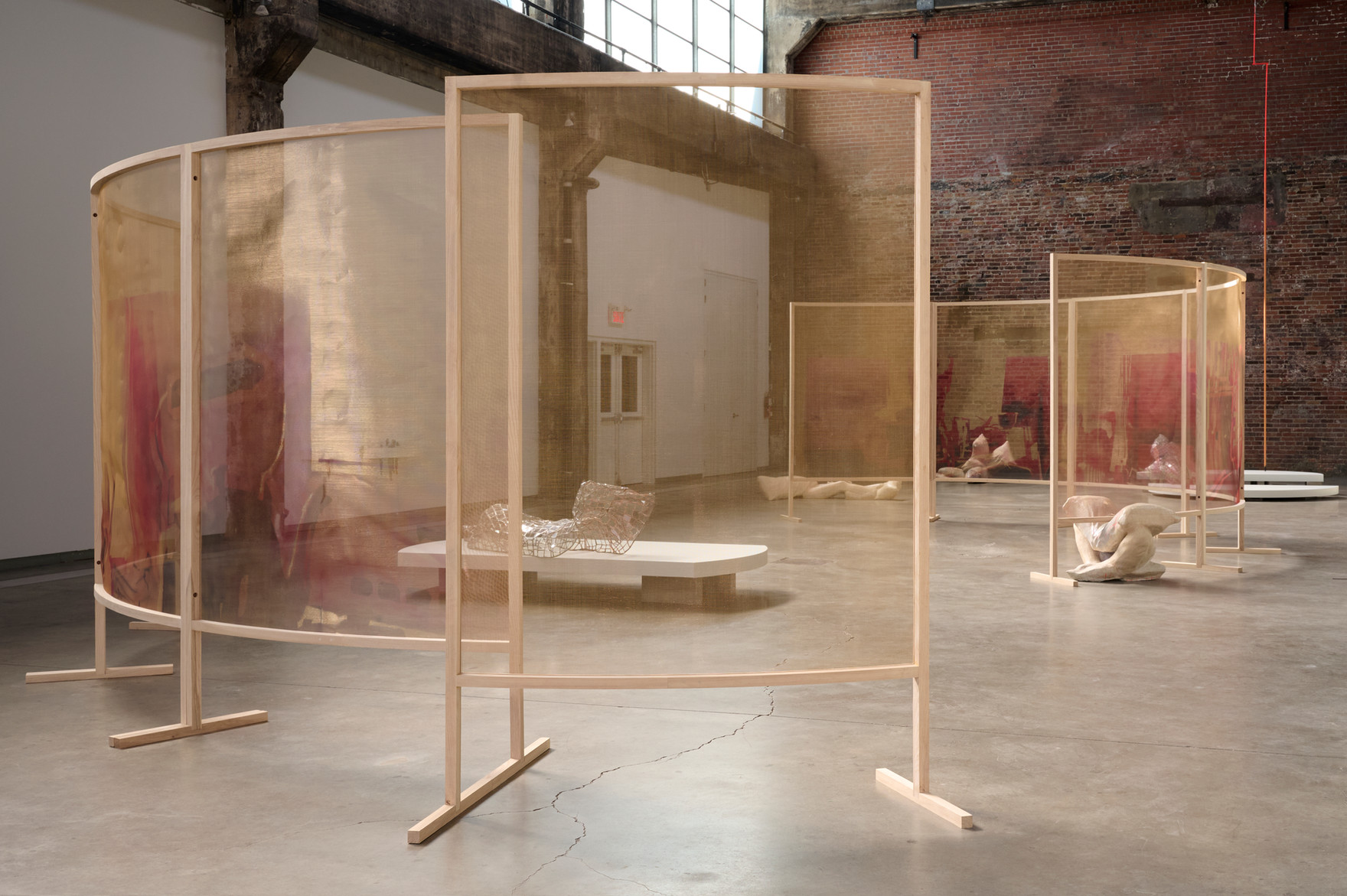
Towards: Screens appear to be a recurring motif in your work, most notably in your installations Private Life and now Migraine Season. Can you speak a little bit about the relationship between the screens that act as a component of these installations and the digital screens that are omnipresent in our daily lives?
FAM: The screens in my work function on many levels; as display, object, frame and filmic effect. At this point I consider the approach equivalent to drawing or painting because I have used screening to think through such a variety of ideas. My approach to stained-glass technique has been explored as suspended line drawings, architectural elements and as 3D figurative works.
In Private Life at the Fonderie Darling the screens related specifically to the recent acceleration between public and private spaces as they flowed through a single domestic plane, the home. The exhibition considered the impact of this acceleration on how we lived, loved, worked, engaged politically, etcetera. My father was a draftsman who couldn’t handle the transition to AutoCAD and I often think about those who cannot adjust in these intense moments of transition. While also being aware that there were many folks that found new community and access opportunities within the shift.
The Private Life screens were twelve slices of a spacious circle, a nod to Foucault’s panopticon and contemporary concerns regarding surveillance and the ethics of online landscapes. Within a cultural shift like we so recently experienced, there are legitimate fears of what freedoms or permissions we are handing over and if legislation can move as quickly as technology advances. In the Fonderie exhibition the panopticon is broken into partitions. At times it feels like a walkway in a public park and at others an intimate space where you are one-on-one with a sculpture. My aim was to express both this shifting ground and to create spaces that elicited a variety of emotional responses. At Fonderie this was also a way to activate and respond to a daunting architectural space.
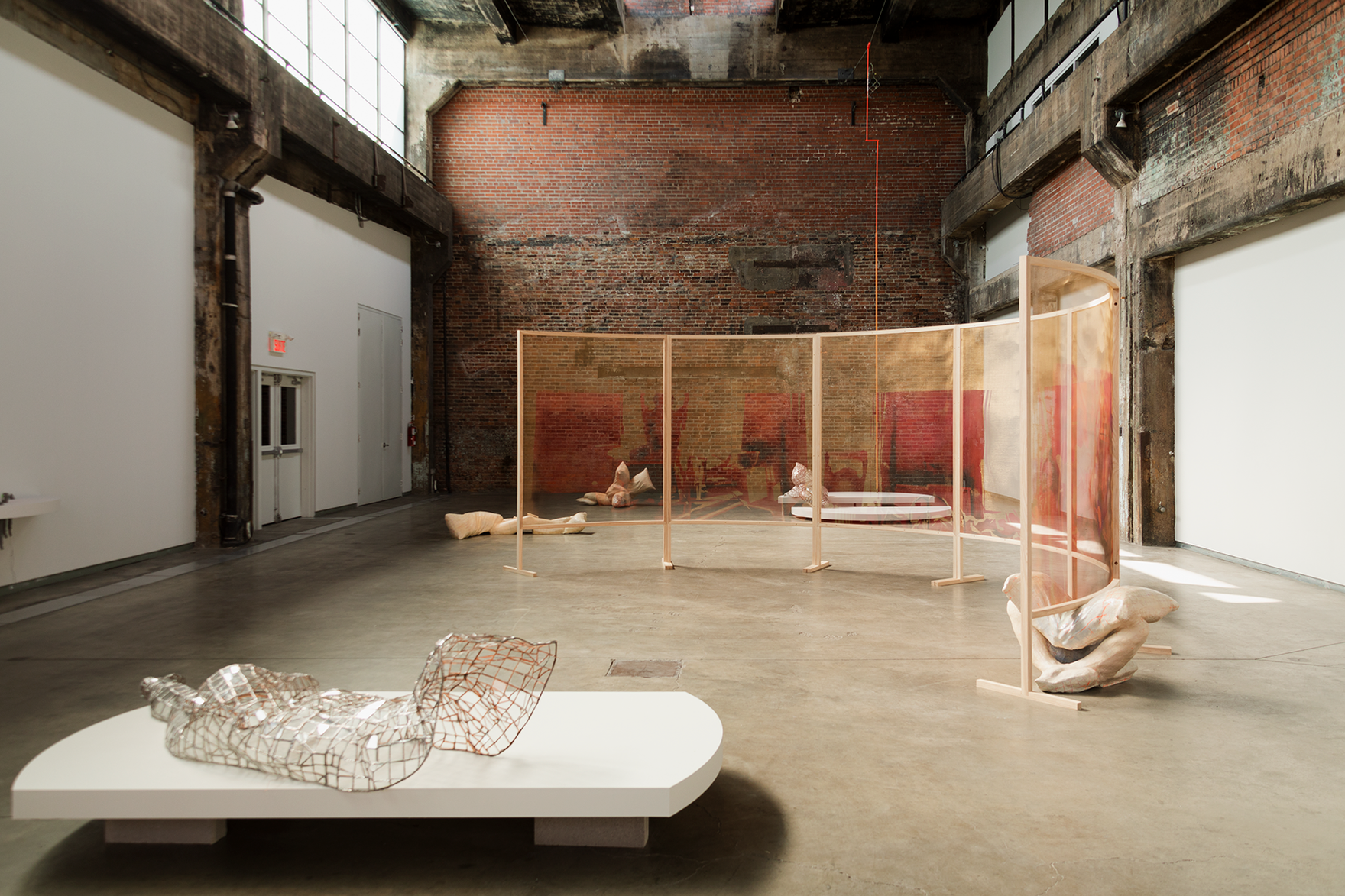
My approach is often conceptual, material and responsive to the architecture framing; these vocabularies build on each other, eliciting the work.
The way I am hoping to use the screens in Migraine Season, at Towards is in a more intimate way like portable room dividers. These screens function at a more figurative level, their scale is closer to a full-length mirror, but they gridded and fracture the reflection. Breaking the figure into monotonous, digestible, pockets of information.
Towards: Implicit within the notion of screens is this push-pull relationship between concealment and revealing. Can you expand upon how you think about these two seemingly contradictory impulses?
FAM: Push and pull relates directly, for me, to desire. I think desire is about the unknown and the abject. The potential of an encounter, outside the everyday. Above I refer to the reflection in the screens as monotonous pockets, but the fractured repetition of image also becomes, when activated by movement, something trippy and fantastic. There is almost a state of glamouring with them, something very alive in the way they oscillate between line, materiality, effect, transparency and mirror. This is why I often refer to them as suspended animation. They lay in wait.
They are also dangerous objects. Glass is a charged material. It is omnipresent but can be instantaneously transformed into a vicious, cutting thing. My work often moves through oppositional forces, fragility and strength, stasis and movement, attraction and repulsion. These pressures coming together in a single object are intriguing and hold my interest.
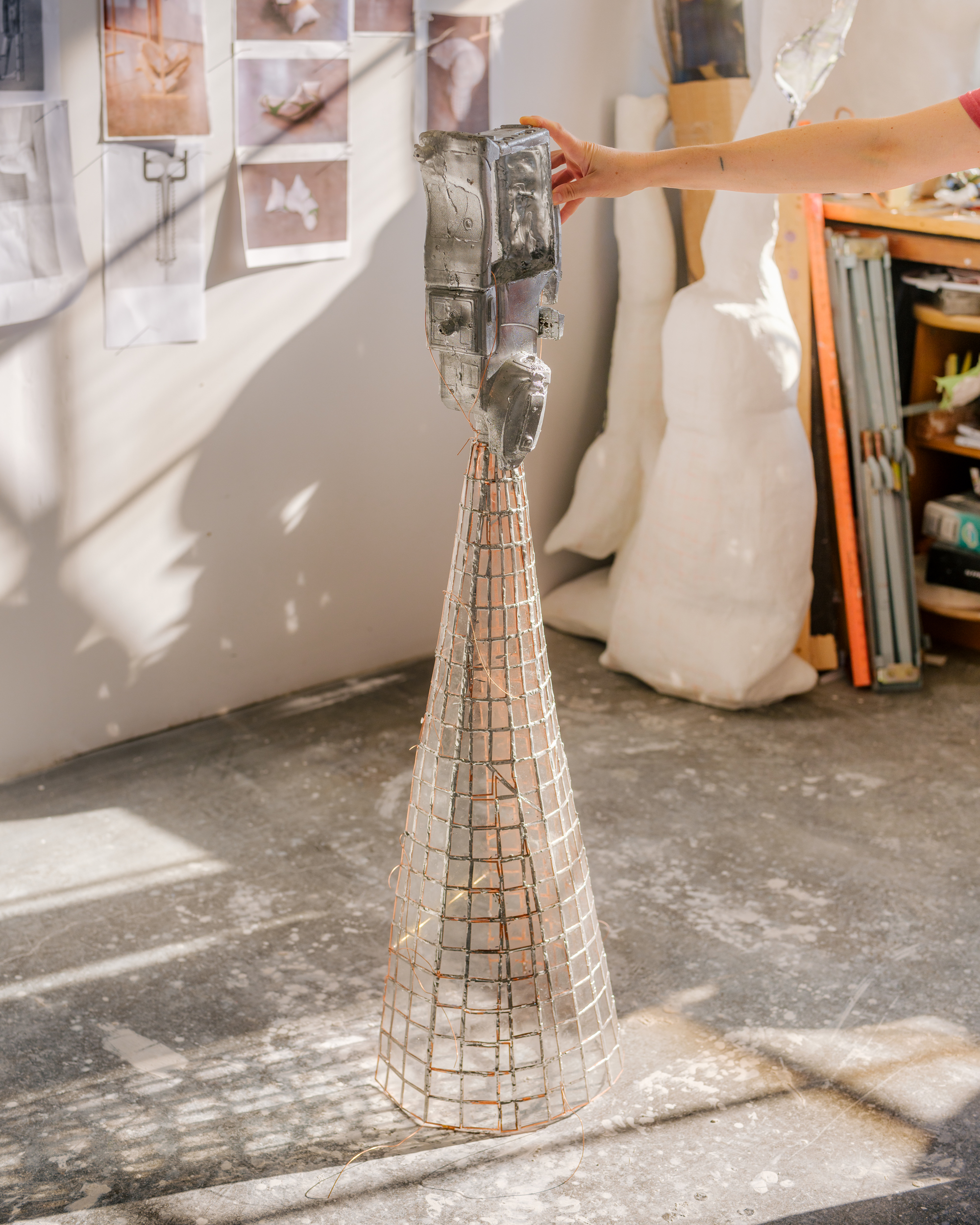
The fractured glass works, which were initially all derived from broken picture frames of varying qualities and tints, function as an effect to be experienced and as an object. Especially in the 3D pieces which, because of the angled surfaces, create a vertiginous feeling. These references bring a psychic implication and the push and pull comes from this, difficult to process, space. Obviously, the sculptures are objects, but they are also filmmakers producing little films at different focal points and angles all over their bodies. They are very active.
Towards: There is definitely a filmic quality of your work. I know you’ve spoken about Michael Snow, Joyce Wieland, and Chantal Ackerman, among others being influences to your practice. Migraine Season specifically seems to incorporate techniques of sequence, looping, and rhythm in its layout. How do you go about translating the temporal nature of film to static objects?
FAM: Yes, I often think about framing, feedback and movement within my work. The sculptures often have wire circuits moving over their surfaces, disrupting their forms. I think this is about communication and sending out signals. All art is a gesture to make contact. I think this also relates to technological flows and psychic focus pulling.
How our attention is constantly shifting between real and digital realms, we sustain this consumptive flow of media. We have normalized, instantaneous shifts between images of crisis and consumption pocketed in the everyday.
It’s infinite access to information alongside being powerless to have any influence. I don’t know what this does to an emotional response and an understanding of meaning.
In this most recent body of work, I have been trying to incorporate a feeling of not-quite-completeness. There is space for the viewer to fill in the object and the works do not impose meaning. They invite dialogue. The screens are staggered and the images they contain are quite illegible. The grids which I have been using of late feel like pixels, film sequences or days on a calendar. The impression is accumulative, vacant spaces and time to be filled. There is a dizzying sequential rhythm to the grids but if you look closer, they are completely hand wrought. Nothing is straight and what holds them together is an organic copper wire root system, weaving and sustaining the grid.
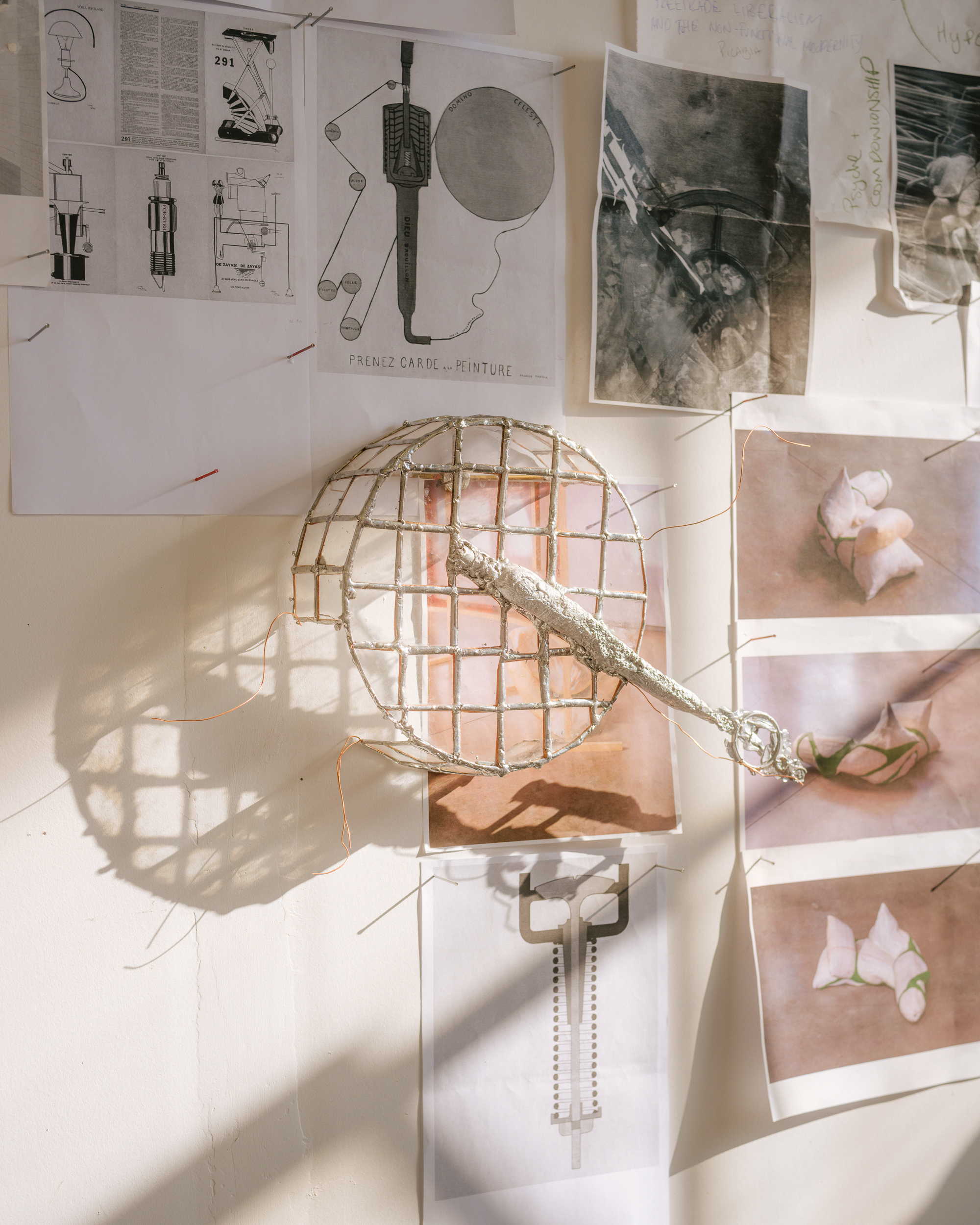
My first exhibition that utilized the glass screen technique was entitled B.M.W.Y.W (Being Made While You Wait) at Centre Clark in Montreal (2017). This title was the second title of Joyce Weiland’s Water Sark (1965), a captivating film made in her apartment, using a mirror and a vase of flowers. There was something in this film and her work in general that really gave me permission to be an artist and I am drawn to the idea of being in wait. Weiland implies that even while in this state of wait we are becoming and always re-making. I think being an artist requires an almost mystical belief because there is no stability. Being comfortable in a suspended state is essential; you are always investing in the unforeseeable. For me that is the excitement but it can also be overwhelming at times.
I know something is working when it surprises me and lends me joy every day in the studio.
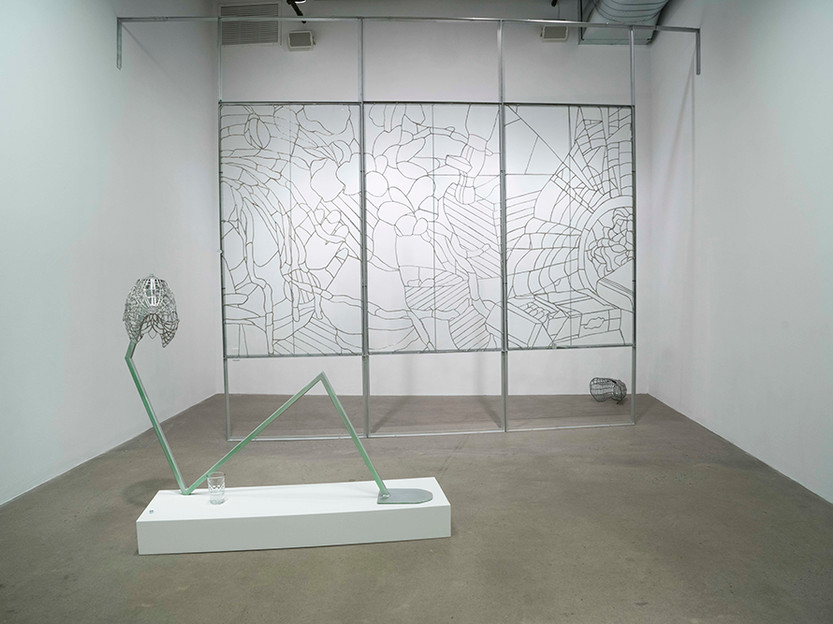
Towards: Fragmentation is another concept present throughout your work, especially in the biomorphic forms that evoke isolated and distorted body parts. Can you speak a little bit more on this and how it ties into notions of voyeurship and desire in the context of media and technology?
FAM: These forms, for me, are so related to the pleasure of making and experiencing sculpture. I know something is working when it surprises me and lends me joy everyday in the studio. I think of the floor pieces as these unfolding, sexy, morphic composites, really captured in an in-between state. For me they come out of the language of stop-motion animation. Often when you’re shooting a sequence it is these unrealized moments of a movement or a form that are the most captivating and that ultimately make the intended gesture real.
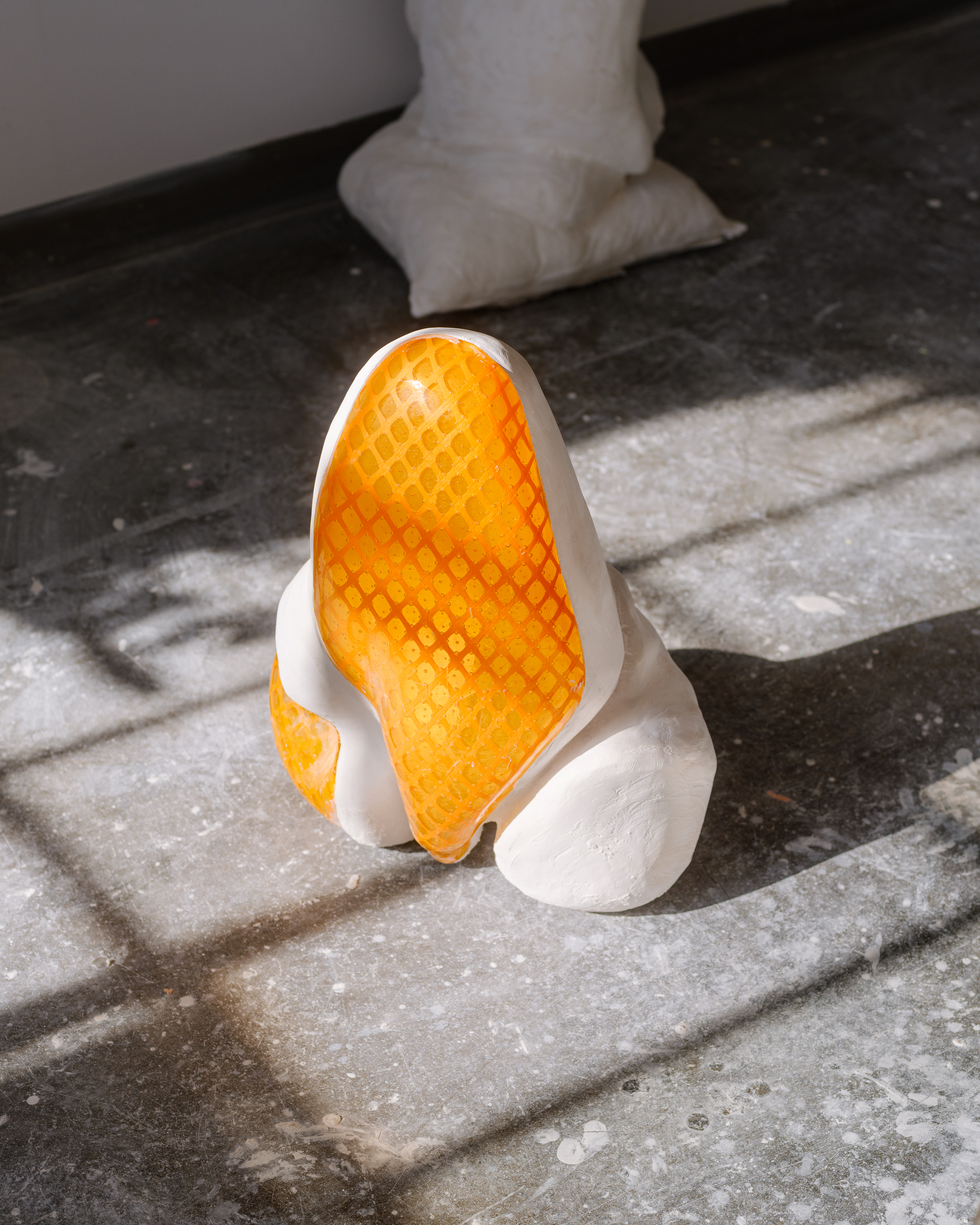
This is also my first body of work that incorporates glass slumping. This new material and process is building on all the previous conversation regarding the screens, but now they are fully embodied or embedded. What intrigues me with the slumping is that it can only be surface. With your molds there can’t be any undercuts and the process is too unpredictable to try and make a closed form. So, these pieces are really about melding the superficial or one-point perspective with formal elements that bring it to life. I hope to surprise the senses with moments of recognition that then shift back into the unknown. They are split subjects, in both their materiality and conceptual terrain.
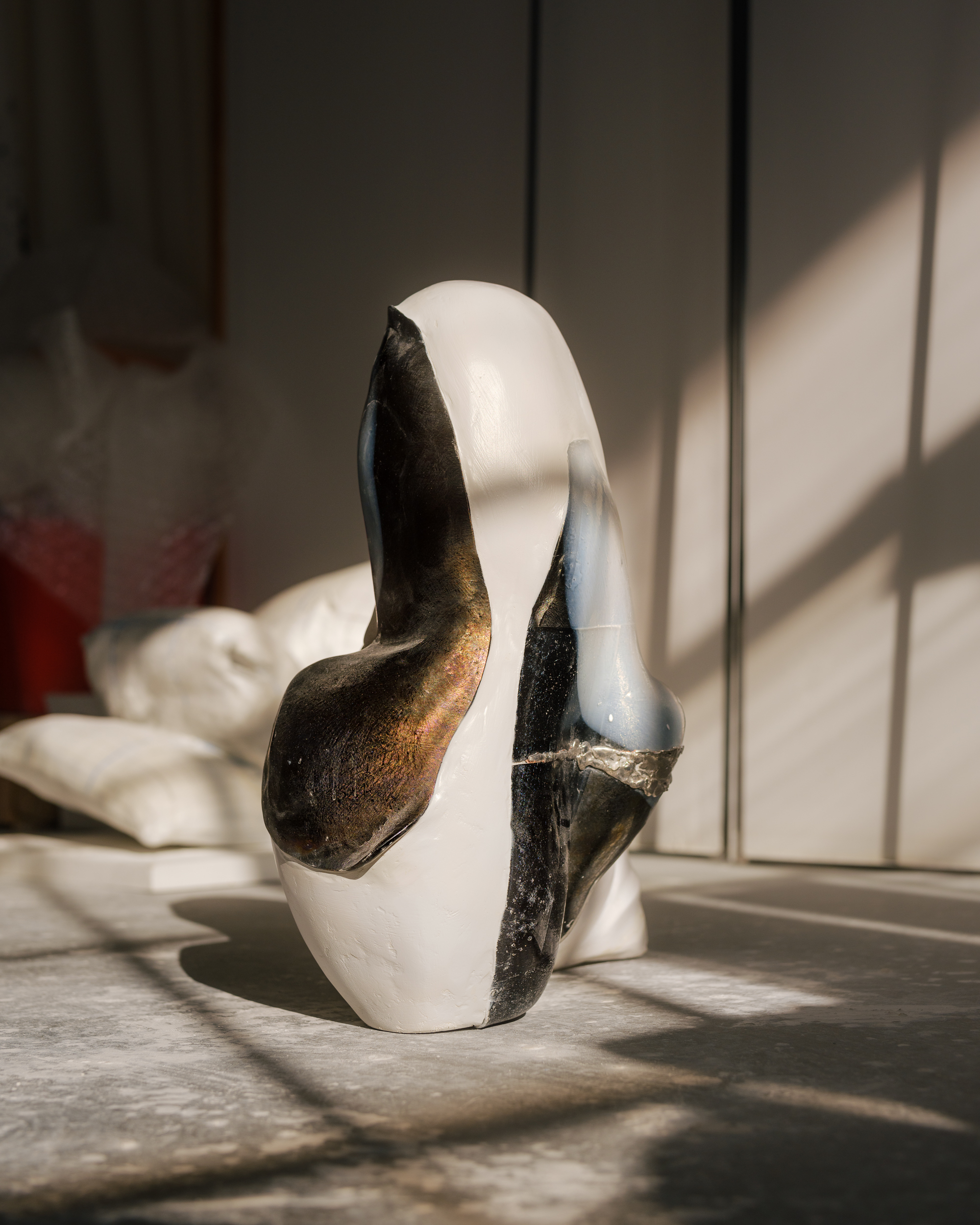
I have also been thinking a lot about Francis Picabia’s mechanical diagram portraits and this idea of a body’s bare labor potential defining its value. One take on his mechanomorphic works is that he developed them in response to the propagandic depictions of masculinity during WW1. I have been thinking about his diagram portraits in relation to mapping the body and flattening its value.
So, the floor sculpture’s relation to media and voyeurship is based, for me, on how we consume or present ourselves as desirable. How we participate in the media cycle and are actually extracting our own value.
A production of the self. Much of the contemporary approach is image based, close cropped and instinctual. Demanding immediate feedback. I don’t think the works are necessarily critical of this, I think they are observing and really just want to participate.
All images of Frances Adair Mckenzie and her studio by Clara Lacasse